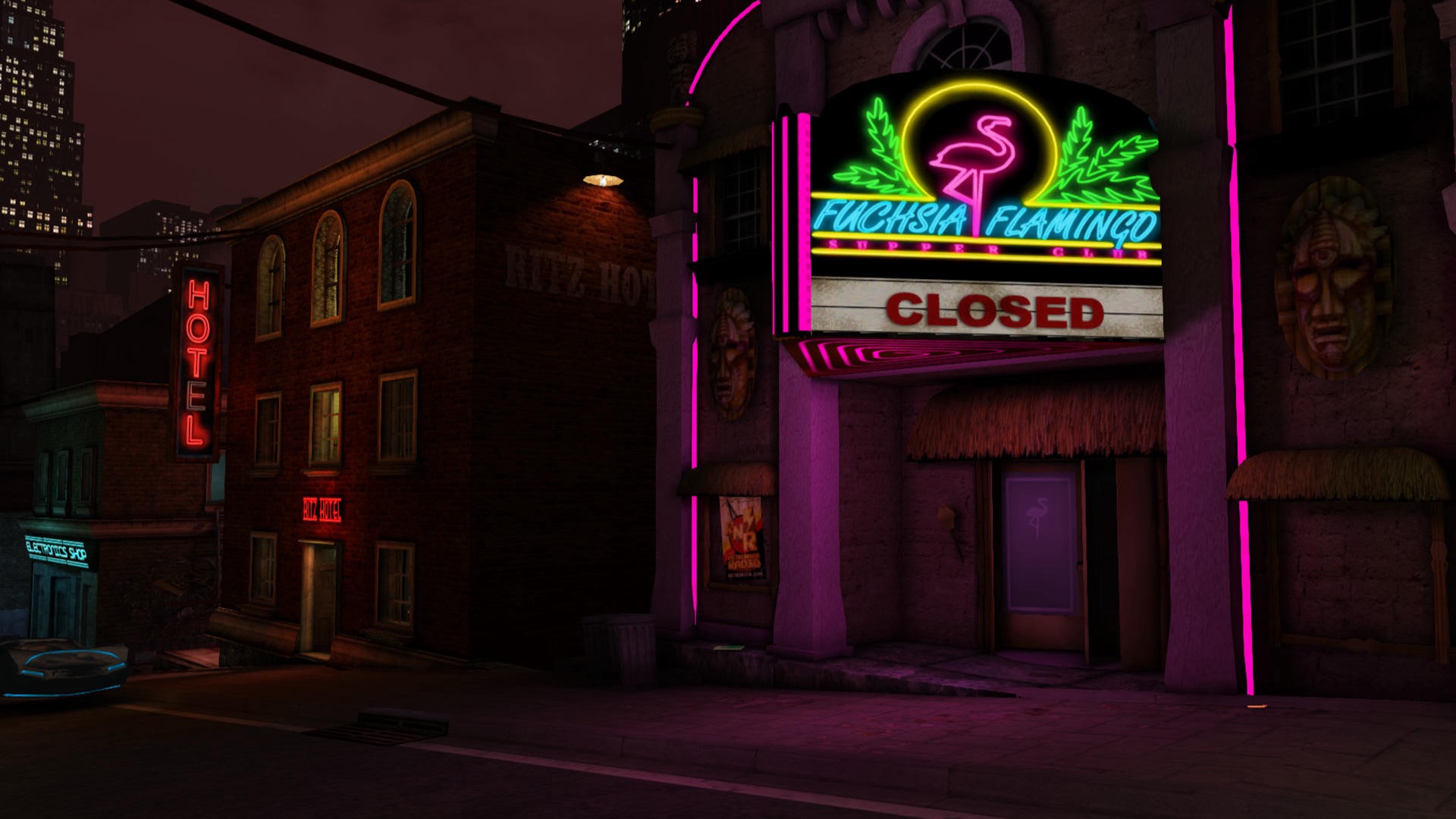Back to the future
The full-motion video (FMV) games of the 1990s occupied an interesting niche in the history of computer gaming. Solid storytelling in games had been established by a procession of text adventures released during the late 70s and 80s, but graphical engines were very basic and nowhere near ready for the sophisticated in-engine cutscenes we see today. FMV provided a way to draw the player into a story in a highly compelling visual way, using real actors and sets; and it required relatively little in the way of new technology. Once PCs had CD drives and hard disk capacities of a few hundred megabytes, the stage was set.
This period coincided with my teenage years, and I took quite a shine to the genre, lapping up games like Night Trap (1992) and Burn:Cycle (1994). The level of engagement and freshness that live action cutscenes offered was a novelty, and although it has to be admitted that the quality of acting and gameplay was not always top-notch, the story thread usually kept me playing to the end. In amongst this wave were the Tex Murphy games, a series of FMV and point-and-click adventures set amid a post-apocalyptic sci-fi noir future, and featuring as their protagonist a witty, cynical old-school private investigator. Subtle the storylines were not—1996's The Pandora Detective had the player wandering around Area 51 and interacting with aliens—but they certainly drew you in, and the exploration and puzzle solving kept you interested. I loved them.
The last Tex Murphy game of the 90s was Overseer (1998), which ended on a major cliffhanger, with the eponymous hero apparently assassinated after a meal at a restaurant, along with his lady-friend. But the FMV genre quickly went out of fashion and despite the intellectual property passing through several companies’ hands, none had the will to revive the franchise. So, in 2012, the series’ originators, Chris Jones and Aaron Conners, reacquired the IP and launched a Kickstarter campaign to make a new game. I was amongst the thousands of nostalgic fans who backed the project, and the final product, Tesla Effect, was released earlier this month.
Technology has certainly moved on. The FMV scenes in Tesla Effect are presented in 2K resolution, Unity powers the game engine, and multi-gigabyte file sizes no longer mean swapping DVDs (or, shudder, CDs) in and out of drives. Production values are also higher, with nice visual effects, dynamic lighting and baddies that look realistically human. The opening video sets the scene extremely well, and ends by descending smoothly towards a familiar sight: Chandler Avenue, Tex’s long-term local neighbourhood.

And so begins a typically convoluted narrative that takes in reincarnation, the 17th century epic poem Paradise Lost and, centrally, the work of Nikola Tesla and various conspiracy theories surrounding it. Frankly, even by the standards of previous Tex Murphy games, it’s a little hard to follow. I understand that a fair bit of filmed material was left on the cutting room floor, so it’s possible that a fuller explanation of the story was sacrificed in favour of brevity. The problem from a player’s point of view is that too much of the narrative material is simply told to us, rather than imparted through actually playing the game and making discoveries. This gives it a transient, forgettable feel, and gives us too little investment in it.
There are gameplay missteps as well as narrative ones. The second half of the game provides too little player freedom for my liking, with the choice of where to go and who to see too often made for me, in stark contrast with the early chapters. Conversation choices are too opaque, as they always have been in the series, giving almost no hint about what Tex will actually say and what the likely outcome is—except at one or two key decision points where the choice is, if anything, too clear cut. To be fair, in a game largely funded by fans it is risky to stray too far from the familiar structure established in the earlier games, but I don’t think that a slight rethink and update of some of the mechanics would have been a disaster for anyone. On the flip side, long-time fans may be sad to see that the “traditional” points system for indicating the player’s level of success has been replaced with a vaguer tier-based rating.

But there is still plenty to like. The game’s main locations are generally memorable and well-constructed, and tend to be self-contained in the sense that items needed in one area are generally to be found there. The puzzles remain genuinely challenging and yet fair, solvable using good old logic and reasoning. The interface has seen a nice update, and the addition of a torch which makes objects of interest sparkle when illuminated is an excellent idea, offering a hand in finding that elusive but necessary item for those who want it. And, crucially, the acerbic wit which has long been key to the success of the series is as entertaining as ever. There’s no doubt that given the size of the team and the scale of the resources available to them, the quality felt in the game is impressive.
So, does FMV still have a place in 2014? Well, why not? Certainly there are modern story-driven games which engage the player but use only in-engine CGI cutscenes. L.A. Noire is a good example, and a game which I enjoyed hugely, but then again it had a rumoured budget of around $25–50m, whereas Tesla Effect was made on barely $1m. Plus, impressive though L.A. Noire’s facial capture technology was, FMV does still provide a level of expressiveness and nuance that CGI can’t yet match. I think that if Jones, Conners and the rest of the Big Finish Games team had access to even two or three times the budget for Tesla Effect, and could think a bit more broadly in terms of gameplay mechanics, a truly outstanding FMV-based game could be the result. But in the meantime, I’m sure I’ll be playing through this one again.
Tesla Effect: A Tex Murphy Adventure is available now on Steam and GoG.com for £14.99 or $19.99. Developer: Big Finish Games. Publisher: ATLUS.